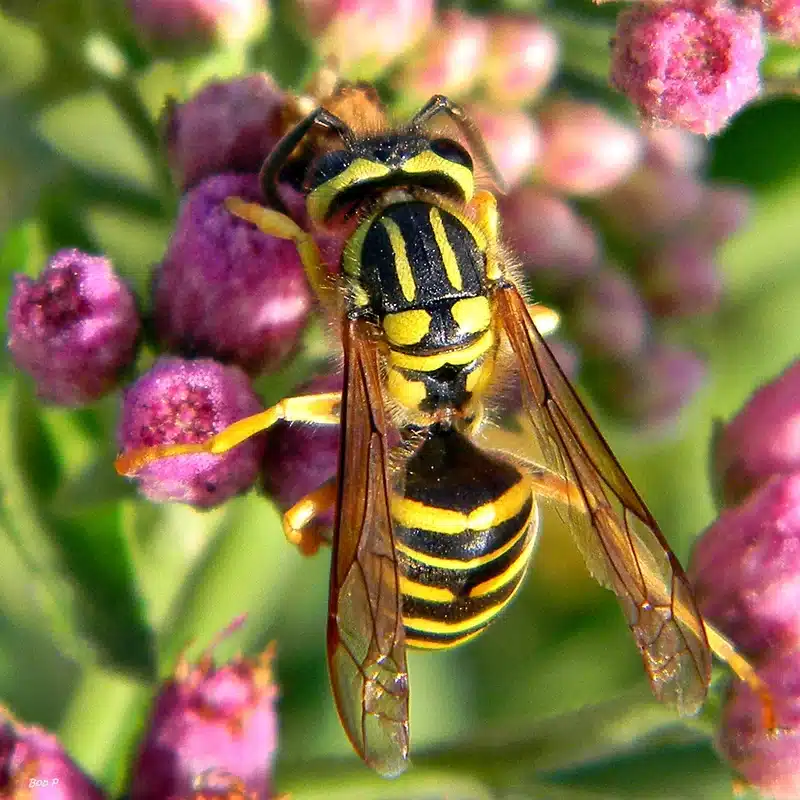Yellow jackets can quickly spoil outdoor fun in Virginia, Maryland and DC. If you’ve wondered when do yellow jackets come out, you’re not alone. These pests are most active in spring and late summer, and they can get aggressive as colonies grow.
Taxonomy & Species of Yellowjackets in the Mid-Atlantic
In our region, yellow jackets fall into two genera. Vespula includes ground- and cavity-nesters, while Dolichovespula covers aerial or paper-type nests. For a close look at different social wasps, check the University of Maryland Extension resource.
Key Yellow Jacket Species in Our Area
- Eastern yellowjacket (Vespula maculifrons)
- German yellowjacket (V. germanica)
- Southern yellowjacket (V. squamosa)
- Bald-faced hornet (Dolichovespula maculata)
Common look-alikes are paper wasps, mud daubers, honey bees and European hornets. See our paper wasps and bald-faced hornets guides for more.
Annual Life Cycle: When Do Yellow Jackets Come Out?
Overwintered queens shelter from November to March and emerge when soil temps hit about 50 degrees F. According to Virginia Cooperative Extension, this usually happens in late March to April.
First workers show up about 4-5 weeks later, from May to early June. Colonies peak July through September, then switch from protein to sugar sources as picnic pests (UC IPM).
Yellow Jacket Life Cycle Timeline
Spring Emergence: Queens emerge when soil temps exceed 50°F (late March to April in Mid-Atlantic)
Worker Appearance: First workers appear 4-5 weeks after queens emerge (May to early June)
Peak Activity: Colonies reach maximum size July through September
Diet Shift: Late season colonies switch from hunting protein to seeking sugary carbohydrates
Nest Architecture & Site Selection
Yellow jackets build two main nest types:
- Subterranean or cavity nests under mulch, in rodent burrows, wall voids or attics.
- Aerial nests with grey paper envelopes hanging under eaves or in trees.
Mature underground colonies can host thousands of adults across multiple comb tiers. Aerial nests are smaller but still house hundreds.
Identification: How to Tell They Are Yellow Jackets
Yellow jackets are 1/2-3/4 inch long with a compact “waist” and folded wings at rest. Their bright yellow-and-black bands are sharper than honey bees. Bald-faced hornets show white-and-black patterns.
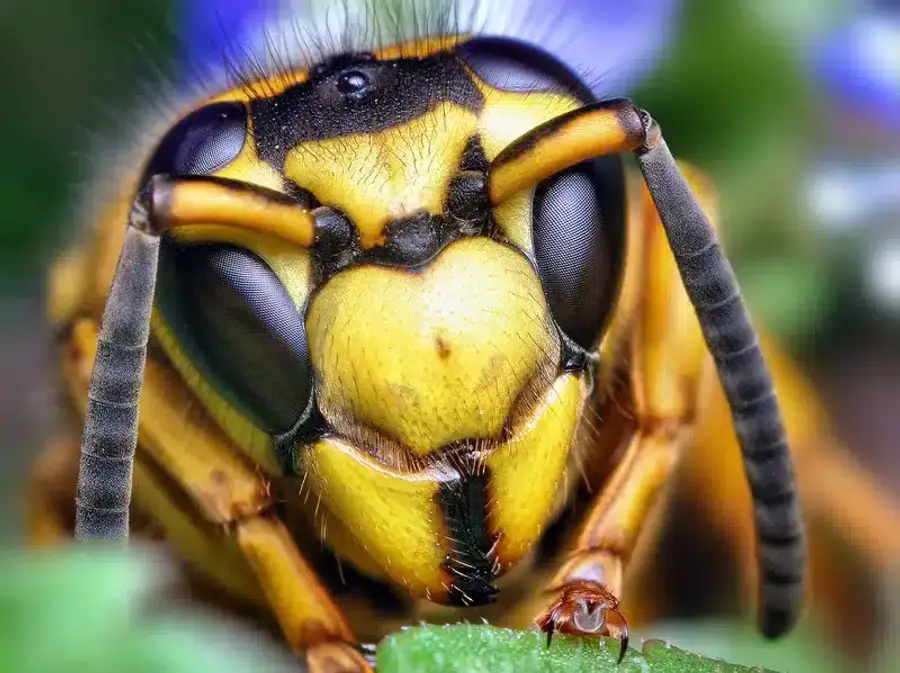
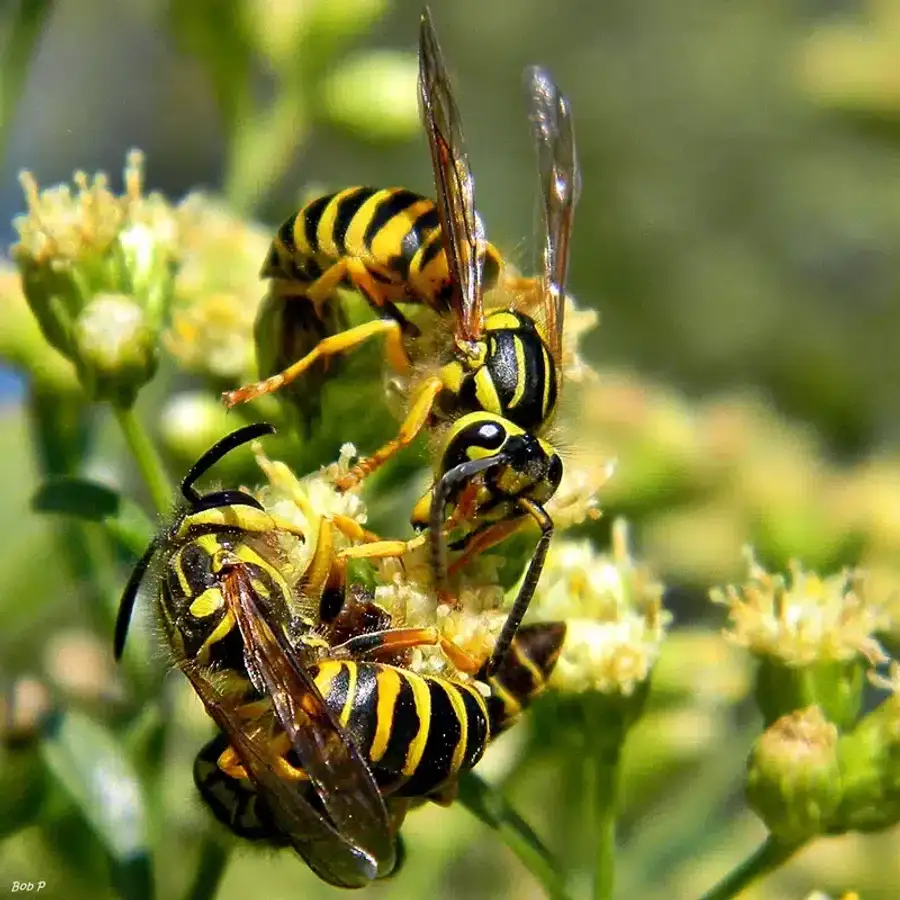
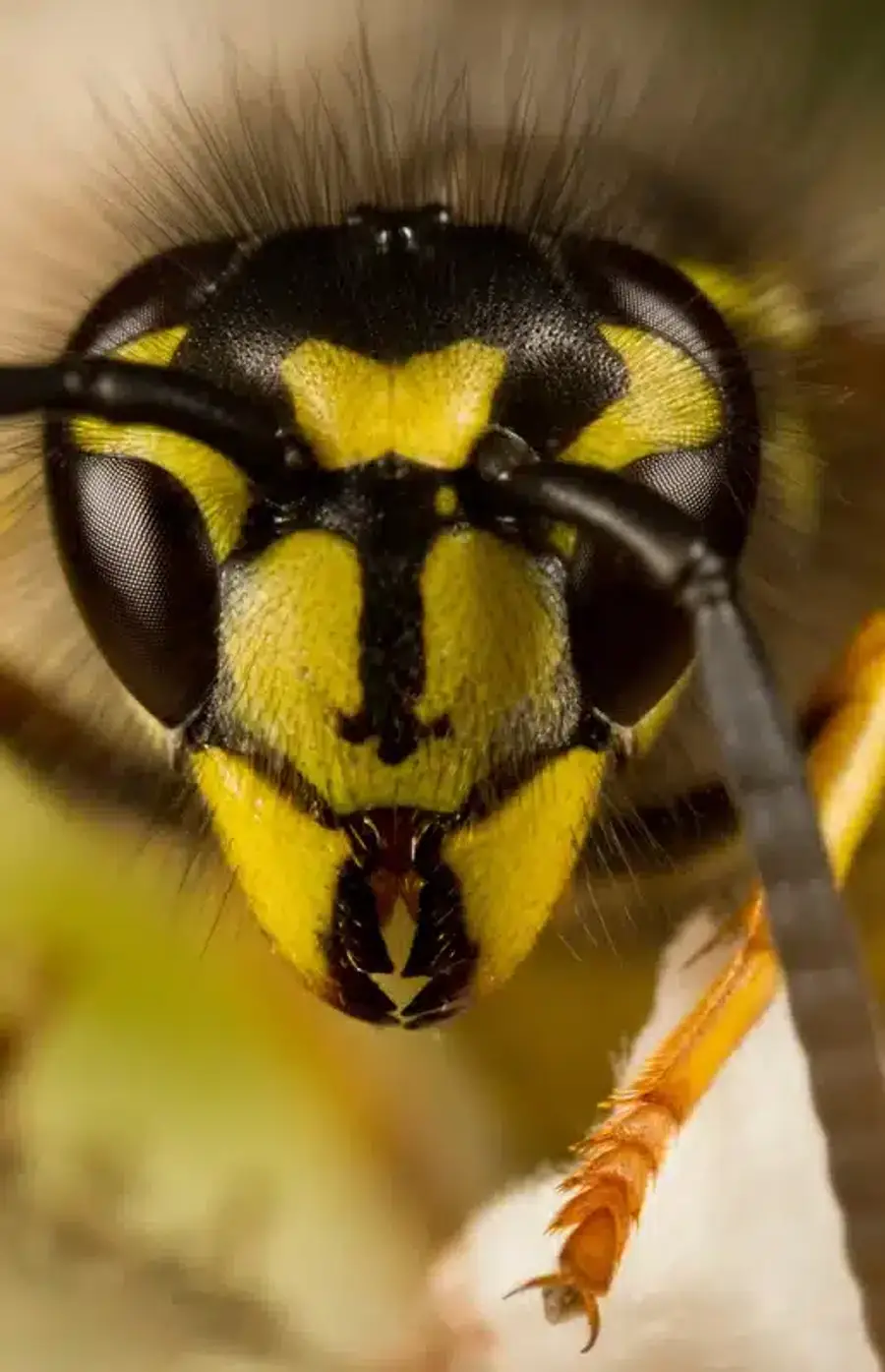

Behavior & Foraging Ecology
In spring and early summer, workers hunt insect prey to feed larvae. Later, colonies crave carbs like nectar, fallen fruit and sweet spills. UC IPM notes this late-season sugar rush makes them frequent at picnics.
Defensive aggression climbs as colonies swell and natural food drops off. August and September can be especially risky around active nests.
Medical Significance & Sting Risks
Yellow jackets can sting repeatedly, injecting venom with phospholipase A1 and antigen 5. Most people get local swelling, but about 1% face severe allergic reactions.


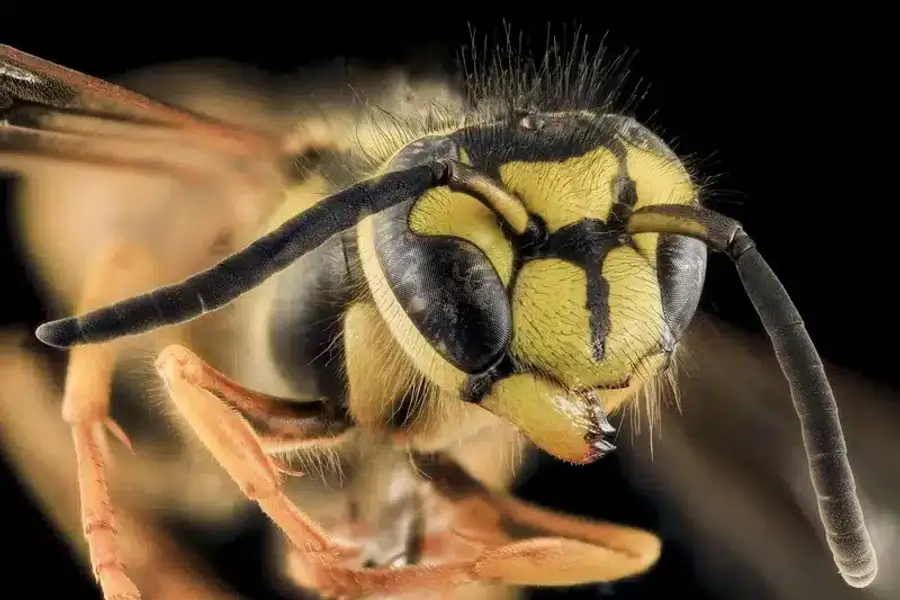
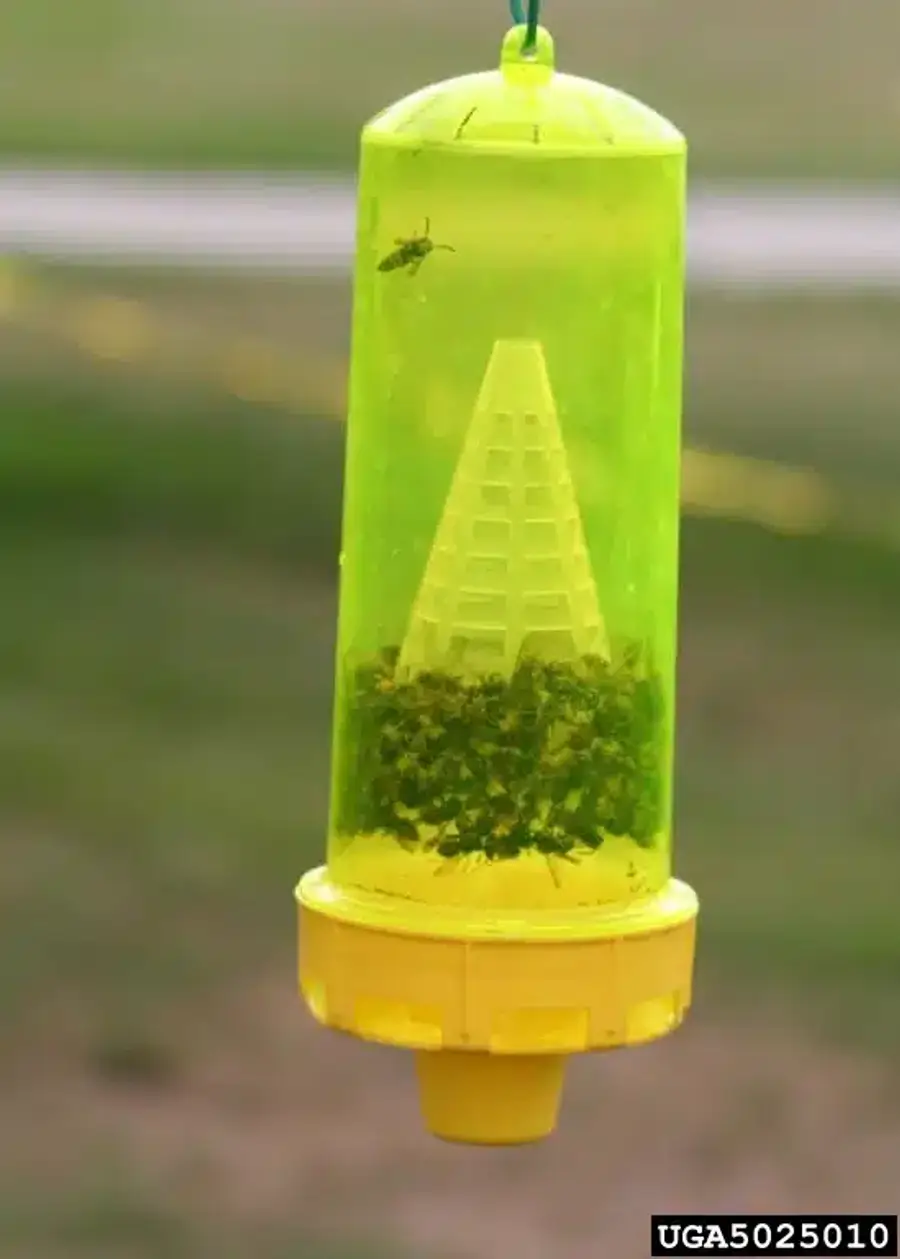
Allergy & Sting Safety
CDC guidance urges outdoor workers to carry epinephrine if sensitized and to wear light-colored clothing during peak activity. If you experience severe swelling, difficulty breathing, or dizziness after a sting, seek immediate medical attention.
Monitoring & Locating Yellow Jacket Nests
Identify nest sites by watching flight lines - workers stream in and out of a single entrance. Night inspections can reveal ground nests by pinpointing where dust or treatment lingers.
Protein-based baits help trap spring queens, while sugar baits map worker hotspots later in summer.
Management & Control Options for Yellow Jackets
Prevention & Exclusion
- Seal gaps in walls, soffits and eaves before April.
- Use tight-lid trash cans and cap fence pipes.
- Remove fallen fruit and keep grills clean.
Trapping Strategies
- Spring queen traps with heptyl-butyrate lures.
- Summer traps using meat baits, refreshed daily.
Mechanical Nest Destruction
Small aerial nests can be removed at night with minimal risk. Always wear protective gear and check for escaping queens.
Chemical Treatments
For ground or void nests, licensed technicians use insecticidal dusts at dusk when most workers are inside. Entrances are then plugged with dusted material, following University of Kentucky Entomology guidance.
Pressurized aerosol sprays can reach nests from 10-20 feet, but require careful handling and timing.
DIY Removal Risks
Attempting to remove yellow jacket nests yourself can result in multiple stings and incomplete control. Large or hidden nests require professional equipment and expertise.
Professional Removal & Verification
If nests are large or hidden in walls, call a pest control company. Registered technicians have the gear and training to apply EPA-approved products and confirm nest elimination.
Better Termite & Pest Control’s Approach
Our small, family-owned business, now in its third generation, blends deep local experience with eco-conscious products. On one HOA job last fall, I treated a ground-level nest, returning days later to excavate the sealed colony and prevent re-settlement.
Our research team vets every product we use, choosing alternatives we’d feel good about using in our own homes.
Seasonal Prevention Tips
Yellow Jacket Prevention Calendar
- March-April: Inspect foundations and set early traps.
- May-June: Watch for small nests under eaves.
- July-September: Keep food covered and check high-traffic areas.
- October-November: Remove leftover nests before winter cleanup.
Regulatory & Environmental Considerations
Homeowners in VA and MD can apply certain pesticides under state exemptions. We always follow EPA pollinator protection guidelines and avoid spraying blooming plants or open water.
Frequently Asked Questions
When are yellow jackets most active?
+
Yellow jackets emerge in late March to early April as queens. Workers arrive by May, with peak activity through July to September.
How can I identify a yellow jacket nest?
+
Look for one flight hole in the ground, wall void or attic. Aerial nests hang under eaves inside grey paper envelopes.
What attracts yellow jackets to my yard?
+
In late season, they seek carbs from sweet drinks, fallen fruit and nectar. Keep food covered and spills cleaned up.
Can yellow jackets return after nest removal?
+
If any queens survive, they might start new nests. Proper excavation and follow-up checks cut this risk.
Are yellow jackets beneficial?
+
Yes. They prey on caterpillars and flies, helping control garden pests. Focus removal on nests near human activity.
What if I'm allergic to yellow jacket stings?
+
Consult an allergist and consider carrying epinephrine. Avoid bright clothing or perfumes during peak seasons.
Do you offer services in Arlington and Potomac?
+
We serve Arlington, Bethesda, Ashburn, Alexandria and Potomac. Check our [Pest Control Arlington](/locations/arlington-pest-control/) page for details.
When do yellow jackets come out in the spring?
+
Most queens emerge once soil temps exceed 50 degrees F, typically in late March to early April in the Mid-Atlantic.
How do I know when a nest is active?
+
Watch flight lines at dusk. Active nests show steady worker traffic at a single entrance.
Should I try DIY removal?
+
DIY methods risk stings and incomplete control. For expert help removing yellow jackets or any stinging insect, call us at 703-683-2000 or email info@bettertermite.com.
With five years of hands-on experience in the pest control industry, George Schulz is a registered technician with the Virginia Pest Management Association and a proud third-generation professional in a family business that's been protecting homes for over 57 years. He manages and trains a team of service pros while also leading internal research efforts—recently spearheading a deep-dive review of thousands of documents on pest control materials to hand-pick the most kid and pet friendly, most effective solutions tailored specifically for homes in the DC metro area.
